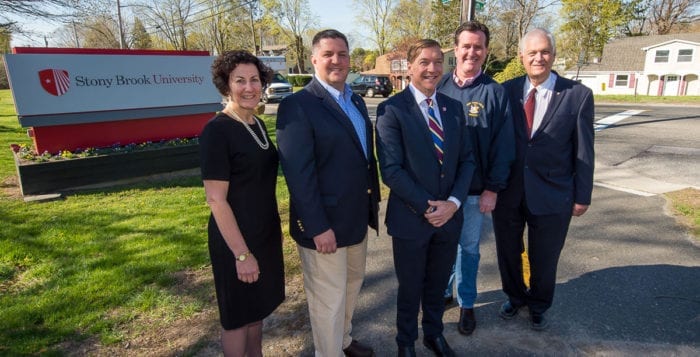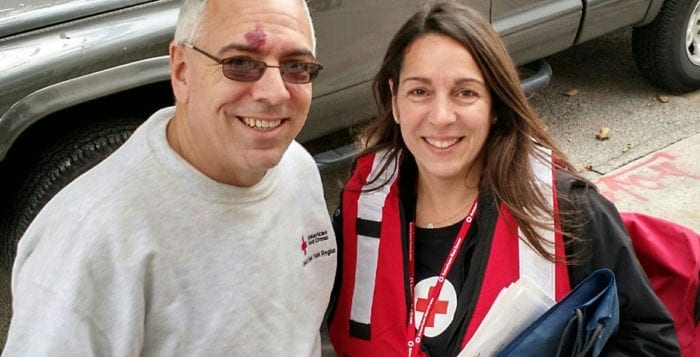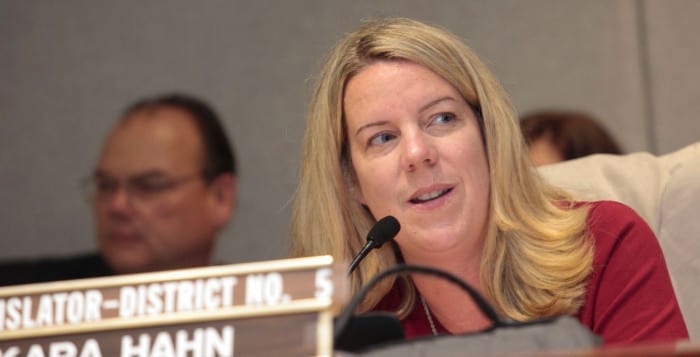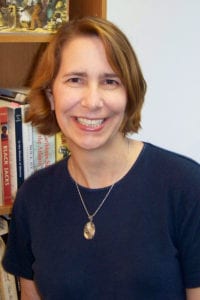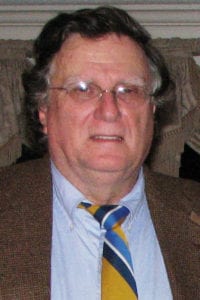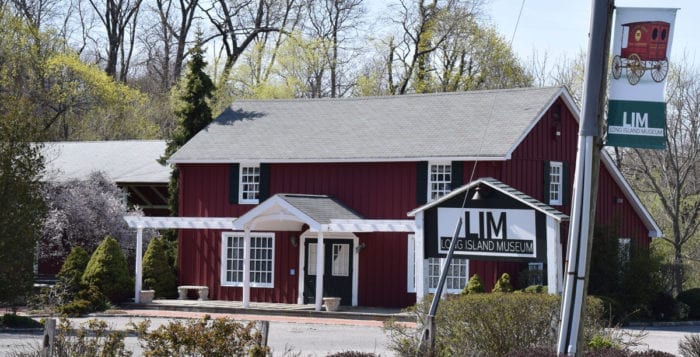Stop … or don’t
Police arrested a 29-year-old man on April 17 for driving while ability impaired in a 2006 Nissan. The Port Jefferson Station resident was going north on Jayne Boulevard when he failed to stop at a stop sign, police said.
Live-streaming arrest
On April 23, police arrested a man from Lake Grove for petit larceny. The 59-year-old allegedly stole a Roku TV device from the WalMart at the Centereach Mall. Police arrested him at the scene.
Sleepover supplies
A 36-year-old woman from Farmingville was arrested on April 21 for allegedly stealing condoms, body wash, soap and a toothbrush from the CVS Pharmacy on Main Street in Holbrook. Police arrested the woman at the scene and charged her with petit larceny.
Kicked and punched
Police arrested three 21-year-old men from Smithtown, Port Jefferson and Stony Brook on April 18 for gang assault. According to police, around 3 a.m. that day the men kicked and punched a victim, who was later taken to Stony Brook University Hospital. Police arrested the three men near Schafer’s restaurant on West Broadway in Port Jefferson.
Shop ‘til your caught
On April 20, police arrested a 36-year-old woman from Islip who allegedly took assorted merchandise from the Target on Pond Path in Centereach. Police arrested her at the scene and charged her with petit larceny.
Not your Bud
A 27-year-old man from Yaphank was arrested on April 17 for selling alcohol to a minor. Police said the man sold Bud Light at a store on Route 25A in Rocky Point.
Bump it
Police arrested a 21-year-old man from Smithtown for violent behavior on April 17. According to police, the man was being loud near Schafer’s restaurant on West Broadway in Port Jefferson. When police arrived at the scene, the man chest-bumped an officer. Police arrested him around 3 a.m.
More impaired driving
On April 18, police arrested a 35-year-old man from Bellport for driving a 2000 Ford while ability impaired on County Road 97 near Stony Brook. The suspect crashed into a tree and police discovered the man was high.
Stealing for suds
An unknown person stole soap from a residence on Wynn Lane in Port Jefferson, on April 17 around 3:30 p.m.
Missing battery
Police said someone stole a car battery from a 1994 Chevrolet that was parked on Narcissus Road in Rocky Point on April 23.
Pills, pills, pills
On April 20, someone stole aspirin from the Rite Aid at Jefferson Plaza in Port Jefferson Station.
On April 24 around 3:15 p.m., two people entered the Rite Aid on College Road in Selden and stole pills and other items.
Scam blues
An unknown person called the Smoke Shack Blues on Main Street in Port Jefferson and identified themselves as a PSEG representative. The individual informed the shop that it hadn’t paid its electric bill. The store gave money to the scammer. The incident happened on April 21 around 2:15 p.m.
A real Pro
Police said someone entered an unlocked 2002 Jeep Grand Cherokee and stole a MacBook Pro from the car while it was parked on Eisenhower Road in Centereach. The incident happened on April 23.
The unbreakable break-in
Two unknown people in dark hoodies tried to pry open a side door to a business on Route 25A in Setauket-East Setauket and pulled down parts of the ceiling to access the building. The individuals also broke a side window to the business. However, nothing was stolen. The incident happened on April 18 around 4 a.m.
Lumbering thief
Police said someone stole a mat and lumber from a residence on Douglaston Road in Sound Beach on April 19.
Swiping cell phones
Someone stole a cell phone from a Rocky Point student’s purse at the high school on April 22.
Case for concern at Kohl’s
A 49-year-old woman from Brentwood was arrested on April 23 after police said she stole clothing, cosmetics, and jewelry from Kohl’s on Crooked Hill Road in Commack. She was charged with petit larceny.
A 38-year-old woman from Smithtown was arrested after police said she stole jewelry from the same Kohl’s, also on April 23.
Trouble in a Toyota
On April 23, a 30-year-old woman from Ronkonkoma was arrested after police said she had heroin in her possession while inside a 2001 Toyota driving on the Sagtikos State Parkway in Kings Park. She was charged with seventh-degree criminal possession of a controlled substance.
An arrest of substance
Police said a 23-year-old man from Patchogue had heroin on him while driving 2002 Chevy on Ronkonkoma Avenue in Lake Ronkonkoma on April 23. He was arrested and charged with seventh-degree criminal possession of a controlled substance.
A 24-year-old man from Mastic in the passenger seat in the car was also arrested after police said he had suboxone on him. He was charged with seventh-degree criminal possession of a controlled substance as well.
No squatter’s rights here
A 48-year-old woman from Islip was arrested on April 22 for entering a private residence on Main Street in Smithtown and staying there for five days, police said. She was charged with third-degree criminal trespassing of an enclosed property.
Drumming up drama
On April 22, a 23-year-old woman from Fort Drum was arrested for punching another woman in the face three times at Express Drive South and Lake Promenade in Lake Ronkonkoma just before 2:30 a.m., police said. She was charged with second-degree harassment with physical contact.
Lots o’ drugs
Police said a 45-year-old woman from Bay Shore was arrested on April 22 for having heroin and crack cocaine in her possession while inside a parked 2004 Ford pick up truck on Pine Avenue and Express Drive North in Ronkonkoma just before 9:30 p.m. She was charged with two counts of seventh-degree criminal possession of a controlled substance.
The Panic in Needle Park
A 28-year-old woman from Hauppauge was arrested on April 21 after police said she had a hypodermic needle in her pocket while on Westwood Lane in Kings Park. She was charged with possession of a hypodermic instrument.
Can’t outrun the police
Police said a 61-year-old woman from Smithtown ignored police officers that were signaling her to pull over to the side of Route 25 in Smithtown while driving a 2016 Honda on April 21, and then intentionally drove into two 4th Precinct-police cars. When they arrested her, police said they discovered she was under the influence of drugs. She was charged with criminal mischief with intent to cause property damage and third-degree fleeing an officer in a motor vehicle.
High times
On April 21, a 22-year-old man from West Babylon was arrested after police said he had heroin on him while on Westwood Lane in Smithtown. He was charged with seventh-degree criminal possession of a controlled substance.
Big break in
Police said an unknown person broke into two Big Brothers Big Sisters bins on Main Street in Smithtown on April 23.
Shop wrong
An unknown person stole food from ShopRite on Nesconset Highway in Hauppauge on April 23, police said.
Watch this
Police said an unknown person stole a DVD player from Walmart on Crooked Hill Road in Commack on April 22.
This is not a drill
A 60-year-old man from Huntington Station was arrested on April 24 at 3:15 p.m. after police said he stole drills and other tools from Home Depot on New York Avenue in Huntington. He was charged with petit larceny.
Not quite hospitable
On April 24, a 61-year-old man from Huntington was arrested after police said he stole money from a waiting room inside Huntington Hospital at 6:30 p.m. He was charged with petit larceny.
Car problems
Police said a 52-year-old woman from Huntington was driving a 2008 Ford south on 11th Avenue in Huntington with a suspended license, and had heroin on her. She was arrested at 4:40 p.m. and charged with unlicensed operation of a motor vehicle, as well as seventh-degree criminal possession of a controlled substance.
Case for concern at Kohl’s
A 49-year-old woman from Brentwood was arrested on April 23 after police said she stole clothing, cosmetics and jewelry from Kohl’s on Crooked Hill Road in Commack. She was charged with petit larceny.
A 38-year-old woman from Smithtown was arrested after police said she stole jewelry from Kohl’s on Crooked Hill Road in Commack on April 23.



